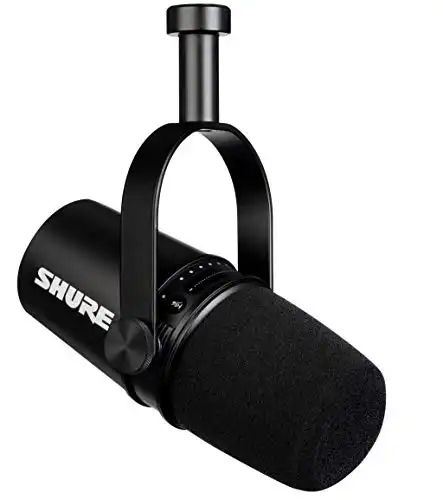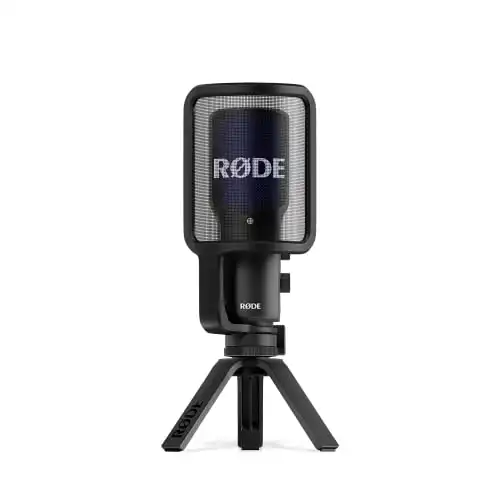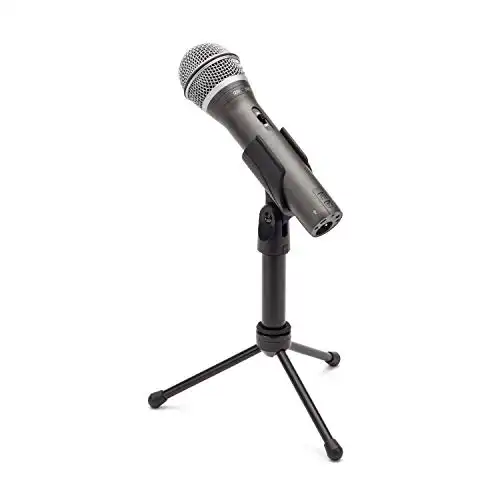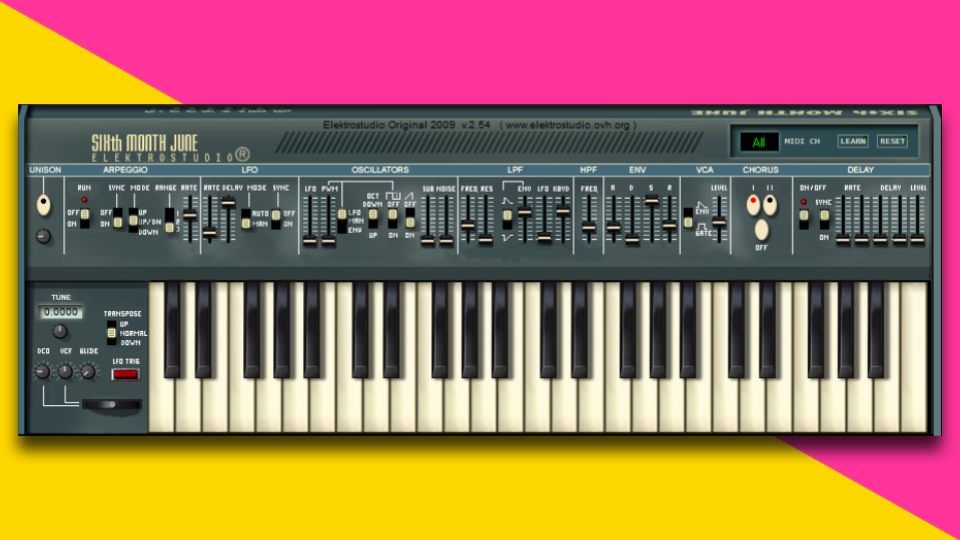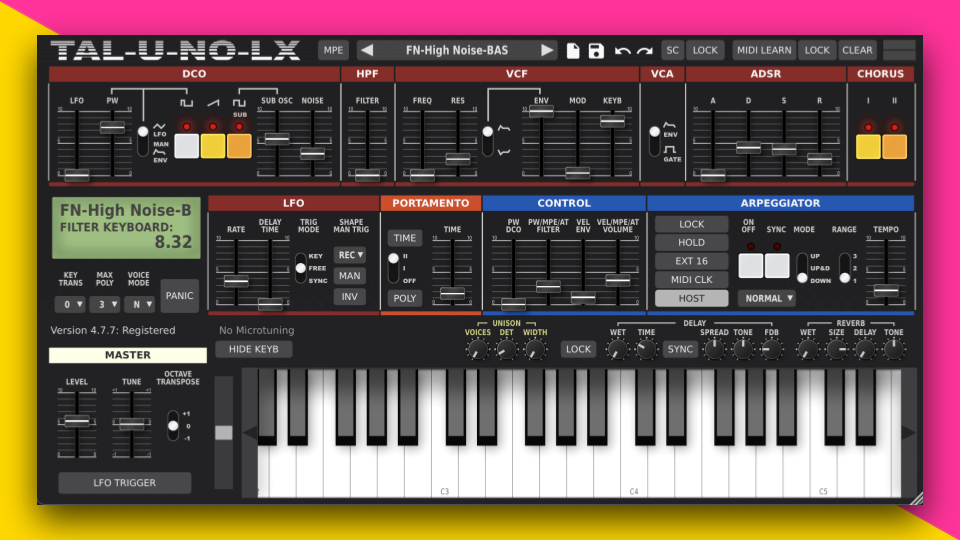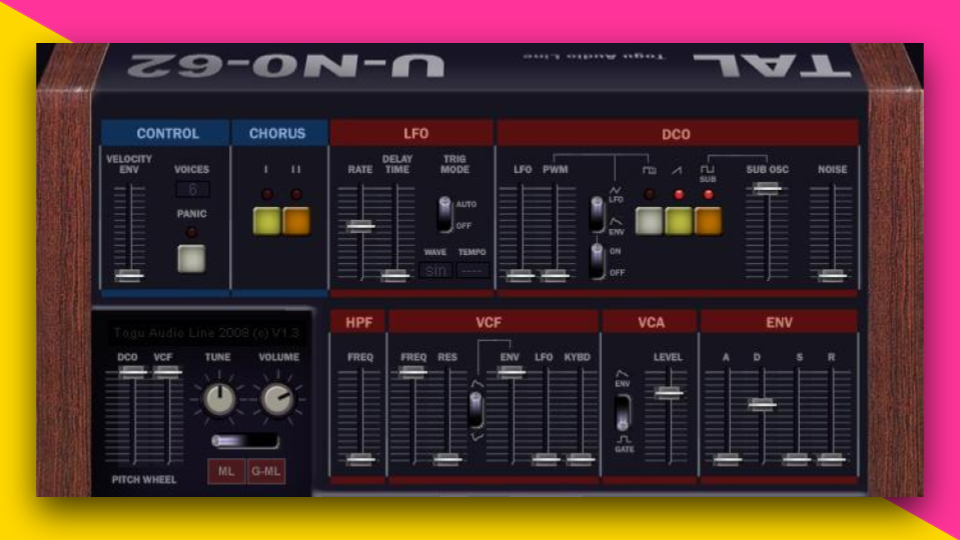Don’t get me wrong. The Blue Yeti is a fantastic microphone. After all, there’s a reason why it’s one of, if not the best-selling USB microphones of all time.
But truthfully, there are plenty of better options out there. Whether it’s for home recording, streaming, or making simple Zoom calls, there are other microphones that’ll sound cleaner in most setups.
The Shure MV7 is a mic that’ll please most content creators. We’ve also picked out a few other Blue Yeti alternatives. Let’s check them out.

Quick Look: The Best Blue Yeti Alternatives
|
$78.99
|
$249.00
|
N/A
|
N/A
|
|
|
|
|
- 4 switchable pickup patterns
- Built-in adjustable stand
- Headphone jack
- Looks great on camera!
- Cardioid pickup pattern
- Ultra-low noise
- USB and XLR ports
- Multiple EQ settings
- Headphone jack
- Cardioid pickup pattern
- Ultra-sensitve large diaphragm
- Stand and pop filter included
- Headphone jack
- Cardioid pickup pattern
- Small and portable
- USB and XLR ports
- Stand and pop filter included
- Headphone jack
We may earn a commission if you make a purchase, at no additional cost to you.
Already Own a Yeti? Try These Tips to Make It Sound Better Before Switching It Out
If you’re here and you already own a Blue Yeti, chances are you’re frustrated with how it sounds.
A new microphone won’t solve all your issues. So before you buy one, try these simple ways to make your Blue Yeti sound better.
1. Shure MV7 — Our Top Pick

- Design modeled after the Shure SM7B
- Tight cardioid pattern resists room & background noise
- Multiple EQ settings for sound clarity
- USB and XLR connectivity for future-proofing your studio
As a condenser mic, the Blue Yeti is very sensitive to room echo — especially in an untreated room. It’s also prone to picking up background noise like fans, barking dogs, or birds chirping outside your window.
The Shure MV7 is a dynamic microphone, which naturally makes it better at rejecting background noise than the Blue Yeti. So if you record in an untreated or noisy room, Shure’s mic will help mitigate those issues.
On top of that, the MV7 offers multiple EQ settings for voice clarity and reducing proximity effect.
It doesn’t have the four switchable pickup patterns that the Yeti does. But unless you have a legitimate need for them (see applications for each polar pattern here), then the MV7 is the clear winner for solo creators.
The MV7’s other best feature is the added XLR port. It offers more flexibility and lets you work with analog gear. In many ways, this future-proofs the mic for any studio upgrades.
In other words, you don’t have to throw it out or replace it when you upgrade your setup. You can keep using it with new audio interfaces, mixers, and other analog gear.
- If you want to see more microphones like it, check out these Shure MV7 alternatives.
2. Rode NT-USB+ — Best USB Condenser Mic

- Cardioid pickup pattern for directional input
- Ultra-sensitive large diaphragm captures wider sound spectrum
- Simple plug-and-play design
- Includes desktop stand and pop filter
Like the Blue Yeti, the Rode NT-USB+ is a condenser mic. But the big difference is the Rode has a single large diaphragm vs. the Yeti’s tri-capsule design.
As such, the Rode NT-USB+ is ultra-sensitive and lets you capture a wider spectrum of sound.
With a natural presence boost, it’ll record all the subtle nuances of your voice for a much fuller sound. The brighter high-end is also perfect for capturing percussive sounds like acoustic guitar.
This current “plus” version adds some quality-of-life updates, including USB-C connectivity and Rode’s Revolution Preamp — the same low-noise, high-gain technology found in the RODECaster Pro II mixing console.
The one downside to the NT-USB+ is the lack of physical controls on the mic itself. So if you need to change gain or EQ settings, you’ll have to use the Rode Connect software or fix things in post.
This USB condenser mic has a natural presence boost for brighter, fuller-sounding vocals. It's a superb option for creators with a home studio.
3. Samson Q2U — Budget Pick

- Simple, portable handheld design
- Tight cardioid pattern resists room & background noise
- Includes tripod stand and windscreen
- USB and XLR connectivity for more flexibility
If you’re on a budget, the Samson Q2U is a fantastic choice — and arguably the last vocal microphone you’d ever need.
Like the Shure MV7, the Q2U offers both USB and XLR output. It’s also small and travels really well, which makes it incredibly flexible for any setup:
- It plugs directly into your desktop or laptop computer.
- The small size also makes it a great companion for smartphones and tablets.
- The XLR port also lets you connect with traditional mixers and audio interfaces.
And for what it’s worth, the design makes it easy to use as a handheld mic.
For the price, the Samson Q2U sounds way better than it has any right to sound. And for that, we can easily recommend it as one of the best Blue Yeti alternatives.
This budget-friendly USB mic is small, portable, and easy to use. And with the added XLR port, it's incredibly flexible fore most setups.
Why We Picked These Blue Yeti Alternatives
The Blue Yeti is a simple USB mic. As such, we wanted microphones that offered the same plug-and-play experience.
These three mics were specifically chosen because they each have some distinct advantages over the Yeti.
For example, the MV7 and Q2U are both dynamic microphones, which are generally better at rejecting background and room noise than condenser mics. Most content creators looking at the Blue Yeti probably haven’t treated their room sufficiently, so a low-noise mic would be the best option for them.
Those two mics also offer optional XLR output. As such, they offer more flexibility and compatibility with mixers and audio interfaces.
We wanted a condenser option like the Blue Yeti. So, we went with the NT-USB. In a treated environment, it’ll do wonders for most voices thanks to its natural presence boost.
Which Blue Yeti Alternative Is Right For You?
Choosing a vocal microphone largely depends on what you value and how you plan to use it. Here are our general thoughts on each of these mics:
- Shure MV7: Get this mic if you want pristine audio and eventually want to upgrade to an XLR setup down the road.
- Rode NT-USB+: If you have a treated room, this mic will give your voice more presence than the Blue Yeti.
- Samson Q2U: This mic works great if you’re on a budget, need something more portable, or want something that can double as a handheld mic.
All that said, the Blue Yeti is still a good microphone for the price. And if having switchable pickup patterns is important to you, stick with that.
Our Top Pick: Shure MV7
All things being equal, I think the Shure MV7 offers the best overall performance out of all these microphones.
While it doesn’t have switchable pickup patterns like the Blue Yeti, that’s not our main concern here.
It delivers crystal-clear, isolated audio for any voice-over project. So if you need studio-quality vocals that sound warm and full, grab the MV7.
Looking for Other Microphones?
While the Shure MV7 is great, it might not be right for you. In which case, here are some other resources you should check out:
- The MV7 is based on Shure’s other legendary microphone. If you’re also thinking about the SM7B, here are some alternatives to consider.
- If you’re interested in other USB microphones, check out our favorite USB mics for voiceovers.
Have a great day!




